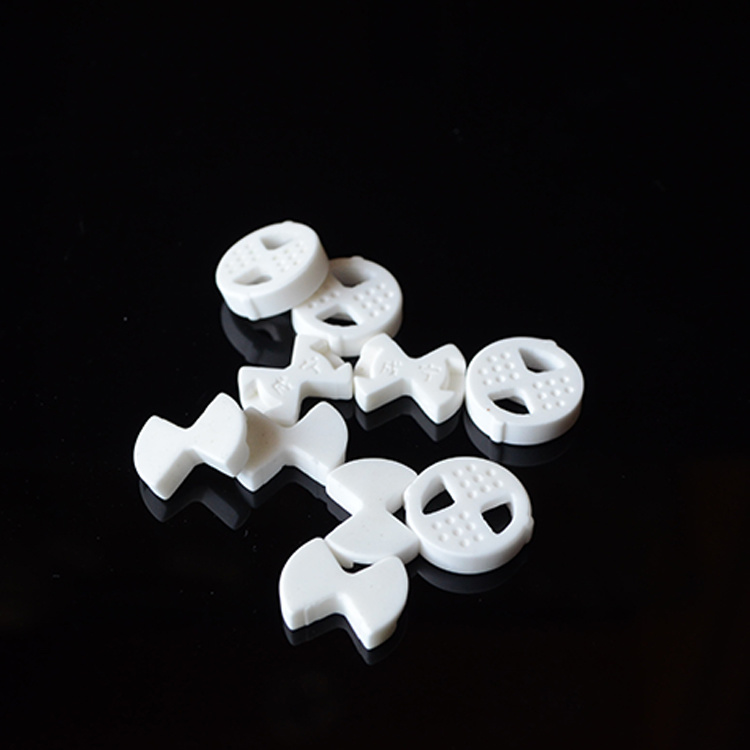
Exploring the Benefits of Alumina Mullite Ceramic Rods in Construction
Time:
2024-12-31 10:21
Source:
Exploring the Benefits of Alumina Mullite Ceramic Rods in Construction
In the ever-evolving landscape of construction materials, the need for innovative and efficient solutions has never been greater. Among the cutting-edge materials that have emerged, **Alumina Mullite Ceramic Rods** have gained significant attention for their remarkable properties and applications. This article explores the multifaceted benefits of these ceramic rods in construction, providing insights into their unique characteristics, applications, and advantages over traditional materials. By the end of this guide, you will understand why these ceramic rods are becoming a preferred choice in the industry.
Table of Contents
- 1. Introduction to Alumina Mullite Ceramic Rods
- 2. What Are Alumina Mullite Ceramic Rods?
- 3. Key Advantages of Alumina Mullite Ceramic Rods in Construction
- 3.1 High-Temperature Resistance
- 3.2 Chemical Stability
- 3.3 Mechanical Properties
- 3.4 Lightweight and Durable
- 4. Applications of Alumina Mullite Ceramic Rods in Construction
- 5. Comparison with Traditional Construction Materials
- 6. The Sustainability Factor
- 7. Future Trends in Alumina Mullite Ceramic Rods
- 8. FAQs about Alumina Mullite Ceramic Rods
- 9. Conclusion
1. Introduction to Alumina Mullite Ceramic Rods
Alumina Mullite Ceramic Rods represent a blend of alumina and mullite, two materials known for their high performance in demanding environments. Their unique composition endows them with a set of properties that make them particularly suitable for various construction applications. As the construction industry seeks materials that not only fulfill functional requirements but also contribute to sustainability and efficiency, alumina mullite ceramic rods stand out as a viable option.
2. What Are Alumina Mullite Ceramic Rods?
Alumina mullite ceramic rods are composed mainly of alumina (Al2O3) and mullite (3Al2O3·2SiO2). The synthesis of these materials occurs through a controlled process that enhances their structural integrity and thermal properties. These ceramic rods are typically manufactured using advanced sintering techniques, resulting in a dense, durable material that exhibits low porosity and high strength.
3. Key Advantages of Alumina Mullite Ceramic Rods in Construction
The advantages of alumina mullite ceramic rods make them a favored choice among architects, engineers, and construction professionals. Below, we delve into their key benefits.
3.1 High-Temperature Resistance
One of the most notable features of alumina mullite ceramic rods is their impressive **high-temperature resistance**. These rods can withstand temperatures exceeding 1,600°C (2,912°F), making them ideal for applications involving high thermal shock and extreme conditions. This quality not only enhances their longevity but also reduces the need for frequent replacements, contributing to overall cost savings in construction projects.
3.2 Chemical Stability
Alumina mullite ceramic rods exhibit remarkable **chemical stability**, resisting reactions with various acids and alkalis. This property is particularly beneficial in environments where chemical exposure is prevalent, such as industrial and laboratory settings. Their resilience against corrosion ensures that they maintain structural integrity over time, thus providing reliability in construction.
3.3 Mechanical Properties
These ceramic rods boast excellent **mechanical properties**, including high compressive strength and resistance to wear and abrasion. This robustness makes them suitable for load-bearing applications and environments with heavy traffic, ensuring that they can endure significant stress without failure. Their strength-to-weight ratio also allows for innovative designs that can reduce the overall weight of structures.
3.4 Lightweight and Durable
Despite their durability, alumina mullite ceramic rods are relatively **lightweight**, which simplifies handling and installation. Their lightness, combined with their strength, enables architects to design structures that are both aesthetically pleasing and structurally sound. This property is particularly advantageous in modern construction, where weight reduction can lead to enhanced energy efficiency and reduced material costs.
4. Applications of Alumina Mullite Ceramic Rods in Construction
The versatility of alumina mullite ceramic rods lends them to a broad range of applications within the construction sector. Below, we explore some key applications.
4.1 Thermal Insulation
Alumina mullite ceramic rods are excellent **thermal insulators** due to their low thermal conductivity. They help maintain temperature stability within buildings by minimizing heat loss or gain. This quality is essential in energy-efficient construction, where maintaining an optimal indoor climate is crucial.
4.2 Structural Support
Due to their high strength and durability, alumina mullite ceramic rods can be utilized as **structural support elements** in various construction applications. Their ability to withstand significant loads makes them suitable for use in beams, columns, and other critical structural components. Additionally, their lightweight nature allows for easier integration into existing designs.
4.3 Decorative Elements
In addition to their functional applications, alumina mullite ceramic rods can serve as **decorative elements** in construction. Their aesthetic appeal and versatility make them suitable for creating unique architectural features, such as facades and ornamental designs, contributing to the overall character of a building.
5. Comparison with Traditional Construction Materials
When compared to traditional construction materials like concrete and steel, alumina mullite ceramic rods present several advantages. While concrete is known for its compressive strength, it lacks the same level of thermal resistance and chemical stability as alumina mullite. Steel, while strong, may be susceptible to corrosion and requires protective coatings, which can increase maintenance costs. In contrast, alumina mullite ceramic rods offer a blend of strength, thermal resistance, and corrosion resistance, making them a superior alternative in many applications.
6. The Sustainability Factor
Sustainability is a critical consideration in modern construction. The production of alumina mullite ceramic rods can be aligned with sustainable practices, as they can be sourced from abundant raw materials and designed to last longer than traditional materials. By reducing the need for frequent replacements and minimizing waste, these ceramic rods contribute to a more sustainable construction process. Moreover, their energy-efficient properties aid in reducing the overall carbon footprint of buildings that utilize them.
7. Future Trends in Alumina Mullite Ceramic Rods
As technology continues to advance, the manufacturing processes for alumina mullite ceramic rods are likely to evolve, leading to enhanced performance characteristics and broader applications. Future trends may include the integration of smart technologies that allow these rods to monitor structural integrity in real time. Additionally, ongoing research into the development of hybrid materials that combine alumina mullite with other innovative substances could further enhance their application scope in the construction industry.
8. FAQs about Alumina Mullite Ceramic Rods
What are the primary uses of alumina mullite ceramic rods in construction?
Alumina mullite ceramic rods are primarily used for thermal insulation, structural support, and decorative applications in construction.
How do alumina mullite ceramic rods compare to traditional materials?
Alumina mullite ceramic rods offer better high-temperature resistance, chemical stability, and lightweight properties compared to traditional materials like concrete and steel.
Are alumina mullite ceramic rods environmentally friendly?
Yes, alumina mullite ceramic rods can be produced sustainably and contribute to the energy efficiency of buildings, thereby reducing their overall carbon footprint.
What is the lifespan of alumina mullite ceramic rods?
With their durability and resistance to wear, alumina mullite ceramic rods can last significantly longer than many traditional construction materials, often exceeding decades in service life.
Can alumina mullite ceramic rods be used in high-moisture environments?
Yes, these rods are chemically stable and resistant to moisture, making them suitable for use in high-humidity or wet environments.
9. Conclusion
In conclusion, alumina mullite ceramic rods represent a transformative shift in construction materials, offering unparalleled benefits across various applications. Their high-temperature resistance, chemical stability, mechanical strength, and lightweight nature make them a superior choice compared to traditional materials. As the construction industry increasingly prioritizes sustainability and efficiency, the role of alumina mullite ceramic rods is likely to expand. By embracing these innovative materials, we can enhance the durability and performance of buildings while contributing to a more sustainable future.
Alumina Mullite Ceramic Rods Tube

